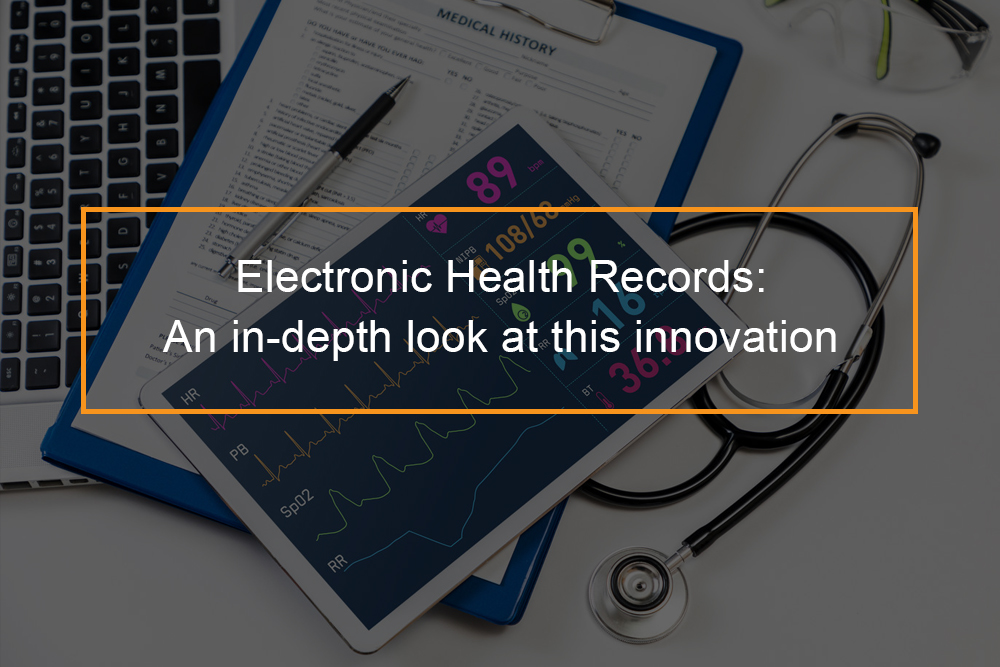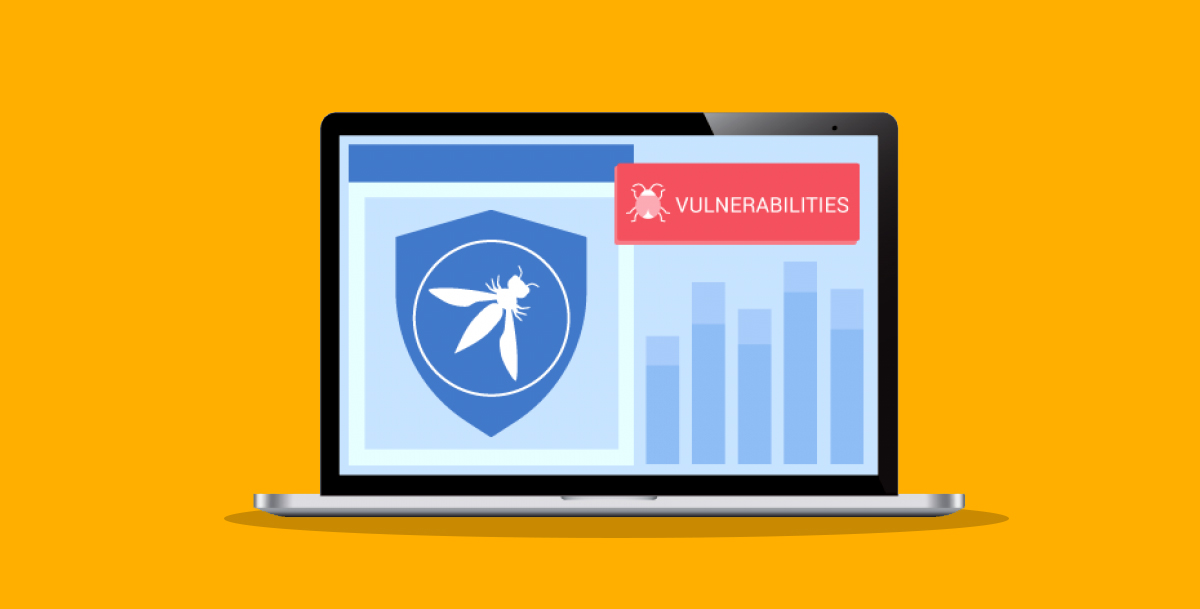
With the technological advancements today, the healthcare industry is not being justify behind. With the emergence of so many facilities the need for integration and easier collaboration lead to innovations to solve this problem, EHR is an example of such an innovation. Below we discuss more on what they are, their benefits and some examples.
What is an electronic health record (EHR)?
Understanding electronic health records
It is the digital equivalent of a client’s paper chart. EHRs are real-time, patient-centered records that are readily available quickly and safely to licensed users. While an EHR consists of the medical and treatment histories of clients, an EHR system is developed to exceed basic scientific information gathered in a supplier’s office and can be inclusive of a more comprehensive view of a client’s care. EHRs can:
- Contain a client’s case history, medical diagnoses, medications, treatment strategies, immunization dates, allergic reactions, radiology images, and lab and test results.
- Allow access to data based tools that physicians can use to make decisions about a patient’s care.
- Automate and streamline provider workflow.
One of the crucial features of an EHR is that health information can be developed and managed by licensed service providers in a digital format capable of being shown other suppliers throughout more than one healthcare company. EHRs are created to share information with other healthcare companies and organizations, such as laboratories, specialists, medical imaging facilities, drug stores, emergency service facilities, school, and office clinics, etc., so they include details from all physicians associated with a client’s care.
Electronic Medical Records (EMR) versus Electronic Health Records (EHR)
Before we get into the best picks, it is essential to understand the subtleties between EMRs and EHRs. Many people in the medical industry use the terms interchangeably, but there are subtle distinctions that are essential to keep in mind.
- Electronic medical records, or EMR systems, are primarily digitized versions of old medical paper records. They are better than paper records in that they produce an easily accessible, centrally located file that can be used to track data gradually and generate the necessary reports to assist healthcare providers in providing better services to their patients. EMRs represent an important exit from the analog medical world into the digital, but they are not the modern requirement of healthcare information technology.
- Electronic health records, or EHR systems, are what people often mean when they use either term today. EHR software varies from EMR systems in that EHRs can communicate with one another and transmit crucial data, such as client records, prescriptions, and lab orders. EMRs technically can’t do that, although industry players, including some medical software application companies, in some cases refer to their options as EMR software. All the choices we reviewed are interoperable EHRs that can order labs, prescriptions, interact with patients, and offer a 360-degree view of a practice’s operations.
What details does an electronic health record (EHR) include?
An electronic health record (EHR) contains patient health information, such as:
- Administrative and billing data
- Patient demographics
- Progress notes
- Vital signs
- Medical histories
- Diagnoses
- Medications
- Immunization dates
- Allergies
- Radiology images
- Lab and test results.
An EHR is more than just an electronic version of a paper chart in a health care provider’s workplace. It’s a digital record that can offer extensive health details about your patients. EHR systems are built to share information with other healthcare providers and companies, so they include info from all clinicians associated with a client’s care.
The best EHR systems
Lists of the leading EHR systems
Best EHR system generally:
AdvancedMD
This wins our overall pick for best EHR system since it uses a variety of designs and execution packages that fit a range of budgetary and training requirements, along with trusted and easy-to-learn software. The integrated EHR and practice management system incorporates either the company’s in-house option or a third-party solution; the business preserves collaborations with more than 700 billers.
Training is continuous after the go-live date and is included in the cost, and AdvancedMD keeps a 24/7 help desk, which sets it apart from a lot of the other EHR vendors we reviewed. The company comes with incorporations to two significant laboratories, Quest Diagnostics and LabCorp, however, it also extends APIs to any ready third party, such as additional labs, hospitals or pharmacies with unsupported EHR systems.
Best EHR system for Small Practices:
Kareo
This EHR vendor focuses on small practices, generally those with 1-6 total service providers. Between its ease of use, fast application, and low cost, Kareo is a fantastic service for a practice that requires you to get up and running quickly and does not want to invest a fortune. All of Kareo’s assistance and features are included in its subscription rate, estimated at $300 per every healthcare provider monthly for a stand-alone EHR system and $500 per supplier per month for an integrated EHR and practice management system.
Kareo’s implementation assistance consists of a dedicated account supervisor who keeps an eye on particular benchmarks to ensure your practice meets every due date on the road to its go-live date. It also has specialized training courses for users in various departments, including suppliers, billers and office supervisors. Kareo’s most exceptional features are its all-inclusive rates and low learning curve, making it simple to release rapidly.
Best EHR system for Specialists:
NueMD
NueMD is our best pick for experts since it uses extremely adjustable design templates for more than 100 specializations, more than the other systems we examined. NueMD’s adaptability scored it huge points for this use because it is a versatile system that can accommodate a wide selection of specialties, instead of one developed directly for a single specialty. Because NueMD’s EHR options are extremely customized, the company does not release pricing information. Overall, NueMD’s versatility sets it apart, and the system can be tailored in such a way that it doesn’t break your budget.
Other EHR systems
Here is a detailed list of EHR suppliers. This alphabetical list also consists of the suggestions discussed above.
Advanced Data Systems
This business’s Medics EHR is certified for Meaningful Use Stage II, and ICD-10 prepared. The system consists of options for integrated practice management, billing and profits cycle management.
Allscripts
Allscripts Professional EHR is created for small and midsize practices. It uses strong interoperability with laboratories and drug stores, Meaningful Use Stage II accreditation, and ICD-10 preparedness.
Remarkable Charts
Amazing Charts is designed by a physician for functionality and affordability. It is Meaningful Use Stage II licensed and has ICD-10 all set, and it offers integrated practice management.
athenahealth
athenahealth’s cloud-based system allows for integrated practice management and billing software application and has Meaningful Use Stage II accreditation, in addition to ICD-10 readiness.
CareCloud
It is a specialty-driven EHR and practice management service focused on ease of usage and execution. CareCloud is suitable for practices of all sizes and can be tailored to fit your specific needs.
Cerner
Its EHR system is certified for Meaningful Use Stage II and has ICD-10 all set. It uses incorporated practice management and billing systems, and it intends to take full advantage of engagement between physicians and clients.
ChartLogic
The EHR focuses on voice acknowledgment and commands, believing that hands-free, precise navigation is important to keep service providers engaged with their clients rather than inhabited with a computer system. It supports a variety of specialties and provides the flexibility to suit a range of requirements.
ChartPerfect
Formerly called Acrendo Software, this EHR system is available in client-server or cloud-based options, licensed for Meaningful Use Stage II, and ICD-10 prepared. It also uses integrated practice and revenue cycle management software.
CompuGroup Medical
CompuGroup’s EHR consists of an integrated practice management system and is offered in a web-based variation.
Core Solutions Inc.
An EHR option for behavioral health in addition to health and human services practices.
eClinical Works
eClinical Works’ 10e EHR consists of electronic recommendations, hospital interoperability and information reporting on health care records.
Elation Health
Elation Health intends to minimize the number of clicks and navigation needed for suppliers to access all elements of clinical care. It tries to simplify workflows so service providers can do more with fewer clicks. The business has 24/7 support, 365 days a week.
eMDs
It is both MU Stage II licensed and ICD-10 ready, eMDs concentrates on functionality and taking clinical and billing information. It furthermore uses cloud-based hosting.
Epic
The EHR offers an integrated practice management system, MU Stage II accreditation, and ICD-10 readiness. Epic promotes its interoperability across the continuum of care as a hallmark of the system.
Evident
Evident’s Thrive EHR application is designed for rural communities, hospitals, and practices. The system uses integrated practice management, billing, and financial management software.
General Electric
GE Centricity EHR is made to work with practice management systems at large practices. Customizable to individual workflows, the system guarantees smooth interoperability, MU Stage II accreditation, and ICD-10 readiness.
Greenway
Greenway Health’s Prime Suite has ICD-10 all set and is MU Stage II licensed. It provides an integrated EHR/practice management system that it calls functional and flexible.
Healthland
Healthland’s Ambulatory EHR uses a Windows-based, flexible interface. It consists of recommendation management software, an integrated job supervisor and e-prescribing.
LeonardoMD
An online EHR with an integrated billing and practice management system, LeonardoMD uses personalized workflows, tutorials, and one-on-one execution consultants.
McKesson
McKesson’s EHR provides an integrated practice management system, is licensed for Meaningful Use Stage II and is ICD-10 ready. Whether client-server and cloud-based, McKesson aims to tailor its system to the size of the practice using it.
MEDENT
MEDENT’s EHR provides mobile access, billing and practice management software application. It is Meaningful Use Stage II licensed and ICD-10 ready, and it can be set up for client-server or cloud hosting.
MEDHOST
This EHR system is created to remove drop-down menus and unnecessary screens for simplicity and use. MEDHOST boasts strong interoperability with medical facility systems, laboratories, and drug stores. It can operate through an iPad.
Meditech
Meditech’s EHR system concentrates on information sharing and interoperability. It has Meaningful Use Stage II certification, and ICD-10 prepared. Meditech offers an online option and is mobile friendly.
Modernizing Medicine
Was designed “from the ground up” by a doctor, Modernizing Medicine is an iPad-native EHR customized for the particular needs of different specialists. It is licensed for Meaningful Use Stage II and comes ICD-10 prepared.
NextGen
NextGen’s EHR, used to be known as MediTouch and concentrates on ease of use, combined with practice management and billing systems, and interoperability. It is accredited for Meaningful Use Stage II and is ICD-10 all set.
Nextech
Nextech’s EHR mostly supports three specialties: ophthalmology, plastic surgery, and dermatology, and can integrate with the business’s practice management solutions. Nextech uses an iOS mobile application so that companies can obtain data on the go.
Practice Fusion
Practice Fusion is a complimentary, cloud-based EHR that organizes every function into one local control panel. It runs across all gadgets and is Meaningful Use Stage II accredited, and ICD-10 prepared.
Praxis
Praxis EMR is among our best choices for small practices. It uses AI and machine-learning algorithms to save doctors time in predictable scenarios. It likewise shuns traditional templates in favor of cause-effect triggers known as representatives.
Quest Diagnostics
The Care360 EHR has e-prescribing, protected messaging and multisystem interoperability. It has Meaningful Use Stage II certification, ICD-10 all set and is readily available on mobile platforms.
ReLi Med
ReLi Med EHR shows high satisfaction in user evaluations; users applaud its exceptional interfacing and interoperability in addition to its choice of specialties. Consumers furthermore reported exceptional support and technical training from the business.
Sevocity
Sevocity is a budget-friendly EHR service that guarantees a tailored experience, specialty-specific features, and a patient portal. Sevocity is Meaningful Use Stage II certified.
WEBeDoctor
WEBeDoctor prides itself on versatility to specific workflows. The EHR uses integrated practice management and billing system in addition to connectivity between your devices through the cloud. It is Meaningful Use Stage II certified and ICD-10 ready.
WorldVistA
The main EHR of the U.S. Department of Veterans Affairs, VA-CPRS is offered for presentation download and trial at WorldVistA.org.
WRS Health
This extremely interoperable EHR features several of the most pre-owned interface engines, meaning you can all but guarantee it will interact with other parts of the health care community. WRS Health is a fairly budget-friendly EHR system with highly customizable workflows and design templates.
Medical benefits of Electronic Health Records
EHR Advantages
The advantages of EHRs in the clinical setting are many and essential. In athenahealth and Sermo 2012 edition of the Physician Sentiment IndexTM, 81% of physicians stated they believe EHRs enhance access to clinical data. More than two-thirds said an EHR could improve patient care. Using an electronic health records system provides the following medical benefits:
- No bulky paper records to store, handle and retrieve.
- Easier access to medical information.
- The capability to develop and maintain effective medical workflows.
- Less medical mistakes, improve patient data security and more effectual assistance for clinical decision-making.
- Simpler participation in Meaningful Use, Patient-Centered Medical Home (PCMH) and other quality programs, with electronic triggers guaranteeing that needed data is recorded at the point of care.
- The capability to collect and evaluate client data that makes it possible for outreach to discrete populations.
- The opportunity to interact seamlessly with affiliated healthcare facilities, centers, laboratories, and drug stores.
How to effectuate an Electronic Health Records System?
Fewer stages of the EMR implementation journey are tougher than the application stage. This stage is where most problems occur and where quicker ways might cause disastrous problems in the future. A botched EHR implementation can damage your income cycle for months, lower client self-confidence and damage your rapport with other healthcare providers. Additionally, stopping implementation may cause you to incur charges from the federal government if your interim record-keeping doesn’t meet regulatory requirements. Here’s how to make certain your medical practice prevents a crisis when transitioning to a brand-new EHR system.
Steps of application
System setup
The first step in establishing a new EHR is doing a system configuration, which is important to precisely specify the information of your medical practice and your patients’ info within the software. That shows the location or locations of your practice and the service providers who will be utilizing the system. You also need to create your practice’s scientific workflow, that includes the creation of clinical design templates. Design templates are needed to satisfy Meaningful Use and Physician Quality Reporting System requirements laid out by federal guidelines. Following those rules is vital to ensure your practice does not incur Medicare payment charges.
During the system-configuration stage, your EHR will be integrated with your practice management (PM) system if it is not already. Also, any data kept within your old system will be migrated to the new one in this phase.
Registration and Credentialing
Registration and credentialing, which reports how you are paid, depends to some level on the responsiveness of the payers. At best, changing payer enrollment from one system to another will take a couple of weeks, and at worst, the procedure can drag out for a few months. It’s vital that you include enough time in the application process in case the registration and credentialing action takes longer than expected. Getting this action right is important to guaranteeing smooth operations for your future revenue-cycle management, including the invoice of precise, constant and prompt payments from insurance companies. Still, you won’t want it to delay your “Go Live” date, which would prevent your medical practice’s operations.
Training
Even the best software in the marketplace is useless without the staff that understands how to utilize it correctly. Training will differ based on your practice’s particular workflow, the various functions of your team member and their preferences on how to interact with the new system. There are numerous different ways to bring employees up to speed; however, the key is to start training a brief time before the brand-new EHR goes live, so staff members retain as much of the information as possible.
Training alternatives variety from self-paced progression, which is the most cost-effective and easiest, to on-site, instructor-led training, which is an extensive, in-person program. Self-paced training includes reading user guides and watching educational videos, which will assist teach your personnel how to use the new system. Naturally, on-site training costs more, since a professional integrator will travel to your practice to train your personnel, but it will ensure that all staff members get one-on-one time with a knowledgeable instructor who knows the workings of the brand-new system. We advise picking less-robust solutions for practices with smaller sized personnel and choosing on-site training for big practices or hospitals.
Troubleshooting and Risk mitigation
Even with proper preparation, problems can arise. EHR software application is complex and important, so be prepared to engage in troubleshooting and danger mitigation. Naturally, this is a sensitive and risky thing to do. Here are a couple of recommendations to safeguard yourself versus some of the prospective problems surrounding execution.
Pick a system with a friendly user interface: Any EHR system can either improve or prevent operations in your medical practice. To guarantee the new system has the desired result, make certain the interface of whichever system you choose is instinctive, easy to learn and use. This will help make the transition simpler for your staff and increase the effectiveness of your system, all without dismal performance.
Include your staff in the decision-making procedure: The best method to determine how ready your personnel is to adapt to the brand-new system is by involving them in the decision-making procedure.
- Do they find specific interfaces friendlier than others?
- What does their favored workflow look like?
- What type of training would they find most useful?
These concerns will assist you to choose a system with your staff in mind and will make adoption of the brand-new system a lot easier for them in the end. Including each of the various departments in your practice throughout the decision-making process supplies indispensable insight when making a final choice.
Honestly assess your practice before the application starts: Providing a truthful and accurate evaluation of your medical practice’s current financial resources, workflow and capabilities is a major part of creating a successful application. Through this evaluation, and during the advancement of plainly specified future objectives, a practice’s administration can more adequately set and track metrics of success for the new system.
The payoff of a fully executed EHR system
At the end of the application procedure, your practice will have a fully operating, modern-day EHR system that will ideally be advantageous to both the quality of medical services you provide and your practice’s profitability. Most health care organizations will have to go through implementation only once or twice, and if it’s done right, the benefits are remarkable.
- A few of the benefits your practice should realize are:
- A more enhanced everyday workflow and friendlier user experience.
- More effective, prompt and comprehensive treatment for clients.
- Complete paperwork of patient sees and rendered services.
- Greater client satisfaction due to reduced wait times and streamlined billing.
- More effective scheduling and increased appointments, in addition to reductions in no-shows and cancellations.
- Increased revenue and declares accepted by payers on the very first submission, in addition to a decrease in the amount of aging accounts-receivable in collections.
- Improved connectivity with labs, healthcare facilities, and experts that work with your practice.









